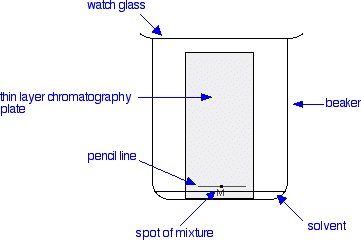Thin Layer Chromatography principle is similar to paper chromatography. The sample is spotted at one end of a coated glass plate, with the slurry of the adsorbents. Usually, Silica gel or Sodium Acetate. Using solvent systems develops the spotted plate and the spots are deducted as in paper chromatography.
 |
| Image Source: Chemguide |
The separation of substances by TLC is faster than by the paper chromatographic method. TLC is commonly used to separate components in complex mixtures and the results obtained are more reproducible.
Using TLC method, the substances that can be separated are Amino Acids, Sugars and Lipids.
Comments
Post a Comment